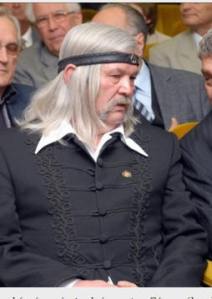Those of you who read my blog regularly surely remember the story of the Ferenc Markoth Heves County Hospital and Hospinvest, a company that manages several other hospitals in the county and elsewhere in the country. However, here is a brief summary. The county hospital, situated in the city of Eger, was (and still is) in terrible financial shape. Every year the county government was called upon to cover the hospital’s losses. Moreover, both the physical plant and the hospital’s medical equipment were in desperate need of capital investment. The county simply didn’t have enough money to make something out of this hospital in which altogether 1214 people worked, including 148 physicians. Either someone had to take over the management of the hospital or it had to be closed. The Medical School of Debrecen showed some interest in assuming control. But the county, where MSZP has a majority, opted for Hospinvest, apparently because their offer was superior.
There was an immediate outcry, including some incredible scenes during the council meeting, demonstrations, and strange happenings inside the hospital. Hospinvest remained resolute and insisted that eventually they would convince the staff that it was in their best interest to become Hospinvest employees. Those who called themselves “defenders of the hospital”–that is, the anti-Hospinvest camp–claimed that the staff would never sign on with Hospinvest and therefore the bid to privatize the hospital would fail. To be certified by the National Health Service (ÁNTSZ) Hospinvest needed 608 signed contracts with employees (that is, a majority of the hospital work force). This morning Gábor Deák, vice president of Hospinvest, announced that they have more than 700 contracts in hand. Moreover, they have applications from 150 well-qualified people to fill jobs that will remain open if the “hospital defenders” don’t change their minds.
It seems that the “hospital defenders” lost this round. However life is never so simple in Hungary. The defenders claim that they have 721 names on their list who claim that they didn’t sign any contract with Hospinvest. Gábor Deák calmly announced that he has in hand over 700 signed contracts. The “hospital defenders” claim that out of the 150 doctors 123 announced that they would never sign any contracts. Hospinvest, on the other hand, claims that three-quarters of the heads of departments as well as head nurses have already signed. (I realize that this is not an apples to apples comparison.)
The real sticking point between Hospinvest and the employees of the hospital was the question of the latter’s civil servant status that, they believed, gave them job security. But what if the hospital goes bankrupt and must be closed? Their civil servant status won’t help a bit. I understand that those who work in Hungarian healthcare find these changes unsettling. However, looking at the issue from the outside one can say that these changes are long overdue. Moreover, healthcare isn’t like manufacturing. When private companies took over state-owned factories a lot of people lost their jobs and became permanently unemployed. But healthcare is in the service sector and addresses a vital domestic need that will undoubtedly grow over time.
Another thing worth considering is that these demonstrations against the privatization of hospital services occur only where MSZP has a majority. In Fidesz localities, privatization goes on all the time without the slightest upheaval. Thus one has the sneaking suspicion that the “hospital defenders” get encouragement and support from Fidesz for its own agenda. They become pawns in a larger political game.

